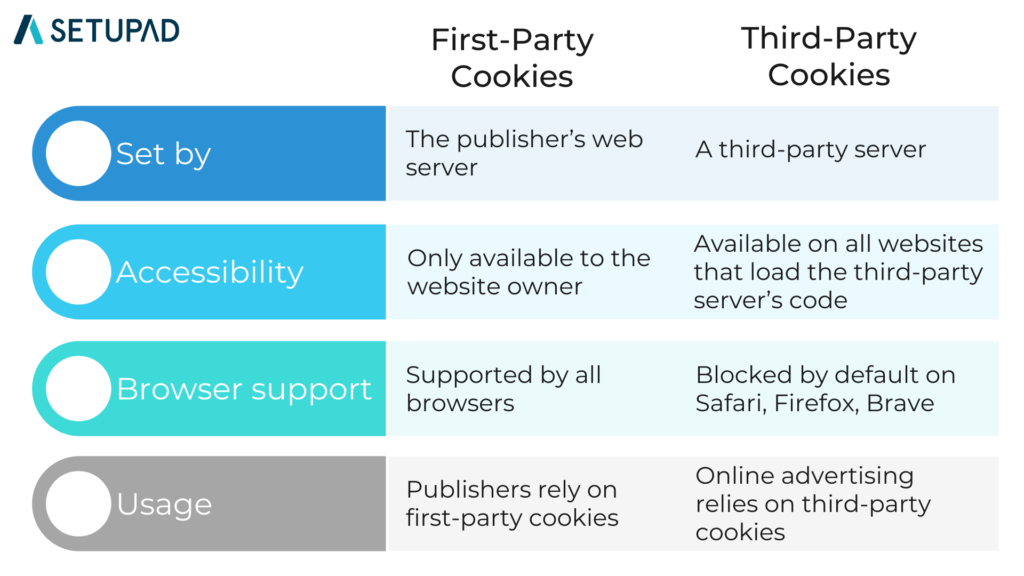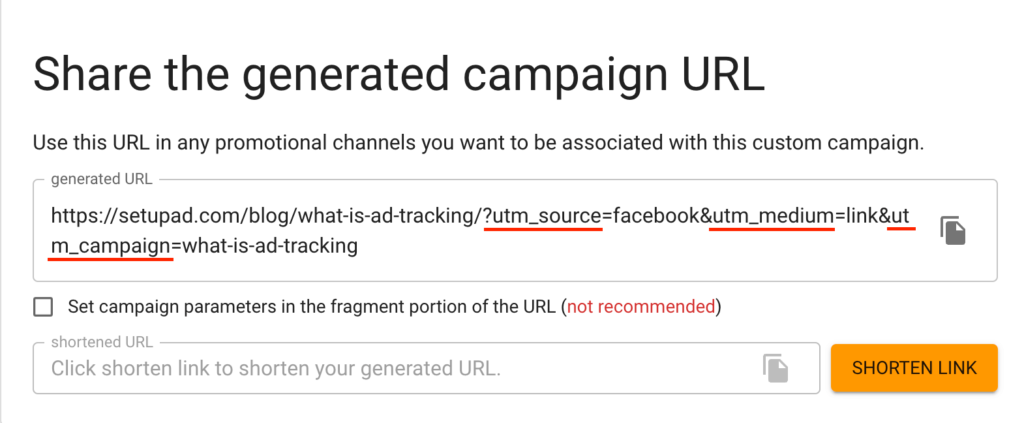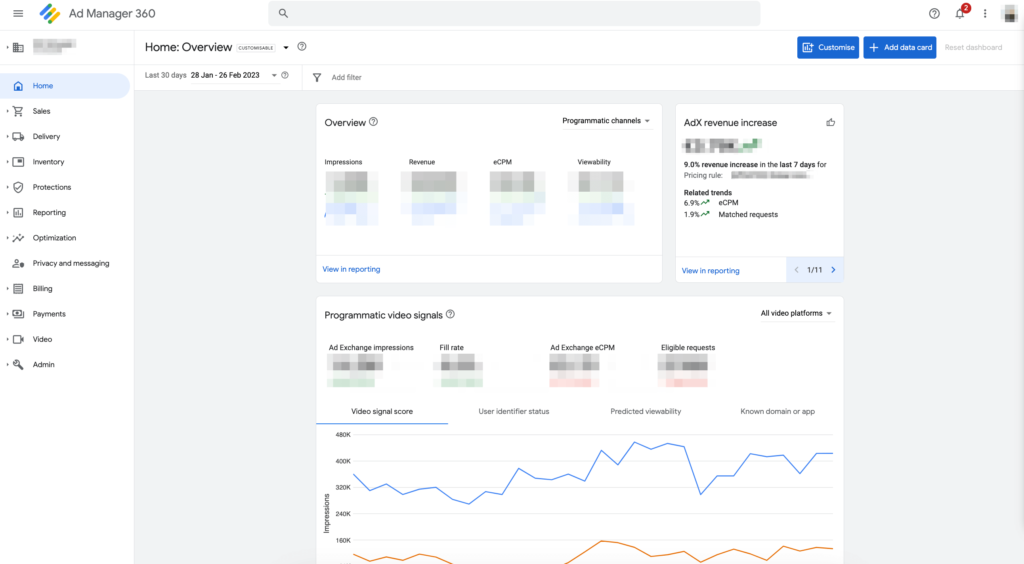What is Ad Tracking?
Ad tracking enables publishers to measure their ad campaign effectiveness by collecting data on user interactions through cookies, pixels, and analytics tools. Thus, they can further optimize their ad placements, improve targeting, and maximize ROI.
Tracking ad interactions was once nearly impossible, but now, with advanced ad tracking solutions, you can accurately measure engagement and results.
In this article we’ll explore what ad tracking is and how it can improve your ad campaigns!
What is Ad Tracking?
Ad tracking is the process of gathering data and user insights regarding the performance of online advertising campaigns. This involves using various methods such as tracking URLs, tracking pixels, and cookies to collect information.
The gathered data helps to understand which ads are effective, which aren’t, and why. The insights derived from ad tracking are used to optimize future ad campaigns, ensuring they are more engaging and better tailored to the audience’s interests and needs.
Importance of ad tracking in digital marketing
Ad tracking empowers marketers to optimize their campaigns, understand their audience, enhance ROI, personalize user experiences, measure success, and adapt to market changes.
Ad tracking is crucial in digital marketing for several reasons. For example:
- Ad tracking provides detailed ad performance analytics, including metrics like impressions, clicks, and conversions.
- Ad tracking helps marketers gain insights into audience demographics, interests, and behaviors.
- Ad tracking allows for the collection of data that can be used to create more personalized ad experiences.
For example, retargeting ads based on previous user interactions can significantly improve user engagement and increase the likelihood of conversions.
- Continuous ad tracking helps marketers stay informed about changes in audience behavior and market trends.
Additionally, analyzing the effectiveness of different ads allows marketers to allocate their budget more efficiently, focusing on high-performing ads that offer better return on investment (ROI).
How ad tracking works?
With ad tracking, companies can collect data about how people interact with their ad campaigns across the internet by using cookies, unique tracking URLs, tracking pixels, and other methods. This data is then analyzed for market and customer insights and used for targeted advertising.
Types of Ad Tracking
These ad tracking methods offer various ways to collect and analyze user data, helping marketers tailor their ad campaigns for better engagement and higher conversions.
Cookie-based tracking
Cookies are small text files placed on a user’s device by a website to track their behavior and preferences. They help to create customized user experiences by building user profiles based on browsing habits and are essential for retargeting campaigns.
Cookies are ideal for serving ads aligned with users’ web activity and retargeting users interested in specific products, such as through abandoned cart reminders.
How does it work?
Cookies are placed on a user’s device when they visit a website. These cookies track the user’s online behavior and preferences, allowing advertisers to serve personalized ads based on this information.
The collected data helps optimize ad targeting and measure campaign effectiveness across different sites.
First-party vs. third-party cookies
First-party cookies are stored by the website a user directly visits and can only be accessed by the website’s owner. On the other hand, third-party cookies are generated by domains other than the ones the user directly visits. They can be accessed on any website that has the code of a third-party server.
The main difference lies in their usage and accessibility–first-party cookies are used exclusively by the visited website for functional improvements, while third-party cookies are used by external entities for broader tracking and advertising purposes, raising more privacy concerns.

Pixel tracking
Tracking pixels are tiny, transparent 1×1 pixel images embedded in web pages, emails, or ads. Despite their small size, these pixels are powerful tools for collecting data on user behavior.
When a tracking pixel is loaded, it sends a request to the server, which logs various details about the user’s interaction. This data helps marketers understand how users engage with their content and can be used to optimize future marketing strategies.
These pixels provide detailed data about a site’s ad views, clicks, and user navigation. It offers a comprehensive view of audience behavior and engagement with content. They’re especially useful for tracking ad performance by measuring views versus clicks and understanding user interactions with website content.
How do pixels collect data?
Tracking pixels collect data through the following 5 steps:
- Embedding the pixel. A tracking pixel is embedded in a web page, email, or ad using HTML or JavaScript code that contains the server’s URL where the pixel is hosted.
- Loading the pixel. When a user visits the web page, opens the email, or views the ad, their browser or email client loads the tracking pixel. This action triggers a request to the server hosting the pixel.
- Server request. The server receives the request and logs the user’s interaction details. This includes various information, such as the user’s IP address, browser type, operating system, screen resolution, and interaction time.
- Data collection. The server also captures data about the specific page or email viewed, including the URL, the referring URL (the previous page the user visited), and any UTM parameters present in the URL. For emails, it logs the time the email was opened and whether any links within the email were clicked.
- Storing and analyzing data. All the collected data is stored on the server and can be analyzed to gain insights into user behavior. Marketers can track metrics such as page views, email open rates, click-through rates, and conversion rates. This information is invaluable for understanding the effectiveness of marketing campaigns and making data-driven decisions.
Server-side tracking
Server-side tracking involves collecting data directly from the server hosting the website or app rather than from the user’s device. It offers a more reliable and secure data collection, as it is less affected by user interventions and browser limitations. It can provide more accurate tracking and analytics.
Server-side tracking is effective in environments where client-side tracking is less reliable or blocked, ensuring consistent data collection for analytics.
How does it work?
Data is collected and processed on the server, bypassing the limitations of browser-based tracking, such as ad blockers and cookie restrictions.
Device fingerprinting
Device fingerprinting collects information about a user’s device to create a unique identifier, allowing tracking across different sessions and platforms. This approach enables to track users even if they clear cookies or use different browsers, providing a persistent method of tracking. Thus, it helps identify users and their activities more accurately.
Device fingerprinting is great for maintaining consistent user tracking across multiple sessions and devices, ensuring user interactions are accurately recorded and analyzed.
How does it work?
It gathers data such as browser type, operating system, screen resolution, and other device-specific details to build a unique profile for tracking purposes.
UTM parameters
UTM (Urchin Tracking Module) codes are snippets of text added to the end of a URL to help track the performance of online marketing campaigns. These codes allow marketers to identify specific details about the traffic coming to their websites, such as the source, medium, and campaign name.
- For example, a UTM code can reveal whether a user came from a Facebook post or an email newsletter, helping marketers understand which channels drive the most traffic and conversions.
Implementing UTM parameters in campaigns
To implement UTM parameters in your campaigns, you append them to your URLs using specific tags:
- utm_source (identifies the platform, e.g., Google)
- utm_medium (describes the marketing medium, e.g., CPC for cost-per-click)
- utm_campaign (names the specific campaign, e.g., “spring_sale”)

You can also use optional parameters like utm_term (identifies paid search keywords) and utm_content (differentiates similar content or links within the same ad).
By constructing URLs with these UTM parameters, you can accurately track and analyze the performance of each marketing effort in your analytics platform, e.g., Google Analytics.
Implementing Ad Tracking
Now that you understand ad tracking, let’s explore what you can track.
Ad tracking spans multiple platforms, including Google and social media sites like Facebook, providing metrics such as views, impressions, clicks, and other online behaviors. These insights help you identify the most valuable metrics to focus on for optimizing your campaign.
To set up ad tracking, generally you need to go through 5 steps:
- Choose an ad tracking platform.
- Generate tracking links.
- Implement tracking codes.
- Configure goals.
- Monitor performance and analyze data.
However, keep in mind that the whole implementation process differs depending on how and where you want to track your ads. Thus, the first step is to figure that out.
Google Ad Manager
Google Ad Manager (GAM) provides great tools for tracking the performance of ad campaigns, allowing marketers to measure a variety of user actions and optimize their strategies accordingly. GAM enables tracking of various user actions through conversion tracking, which can be set up on web pages.
Key metrics include:
- Impressions–measures how often any version of an ad is viewed.
- Clicks–counts how often any version of an ad is clicked.
- Call clicks–tracks the number of times users tap the “Call” button in an ad on mobile devices.
- Verified calls–records how often calls are made to the Google forwarding number in the ad.
- Map actions–measures the number of times users click on a business pin on Google Maps or get directions after seeing an ad.
- Amount spent–shows the total expenditure of the campaign.
Note: To track and serve advertising, Google has committed to using only first-party tracking cookies in its browser, Chrome. In addition to tracking cookies, Google also allows advertisers to use UTM parameters in their campaign setup.

Facebook Ads
Facebook ad tracking enables marketers to measure the success of their campaigns using tools like the Facebook Conversion API and Meta Pixel.
- The Facebook Conversion API collects data directly from your website and app, allowing you to track user interactions and measure advertising ROI. It helps to see how users respond to your ads, what actions they take on the platform, and the overall performance of your campaigns.
- Meta Pixel, Facebook’s equivalent of a tracking pixel, is a piece of code embedded in your website. It tracks user activities such as page views, product views, add-to-cart actions, checkouts, and purchases. This information is used to identify Facebook and Instagram users, allowing you to target ads based on their interests, preferences, and online behavior.
All data collected through Meta Pixel and the Conversion API is encrypted and depersonalized, ensuring user privacy while allowing Facebook to provide detailed analytics to advertisers.
Ad Tracking Metrics
| Key Performance Indicators (KPIs) | Definition | Purpose |
| Click-through rate (CTR) | The percentage of users who click on an ad after seeing it. | Indicates the effectiveness of the ad in attracting clicks. |
| Conversion rate | The percentage of users who take a desired action (like making a purchase) after clicking on an ad. | Measures the success of the ad in driving desired actions. |
| Cost per acquisition (CPA) | The cost incurred to acquire a new customer through the ad. | Evaluates the cost-effectiveness of the ad campaign. |
| Lifetime value (LTV) | The total revenue expected from a customer over the duration of their relationship with the company. | Helps in understanding the long-term value of customers acquired through ads. |
| Return on ad spend (ROAS) | The revenue generated for every dollar spent on advertising. | Measures the overall effectiveness and profitability of the ad campaign. |
| Attribution models | Methods used to determine which ads contribute to conversions. | Helps in understanding the customer journey and the impact of different touchpoints on conversions. |
Key Performance Indicators (KPIs)
KPIs are specific metrics used to measure the success of an ad campaign and evaluate whether it meets business objectives.
Click-through rate (CTR)
CTR measures the percentage of people who click on an ad after seeing it.
- Formula: the number of clicks / the number of impressions x 100
For publishers, a high CTR indicates that their audience finds the ad content engaging and relevant, which can lead to higher revenue from advertisers willing to pay more for ad placements on high-performing sites.
Ads with high CTRs tend to be more pertinent and valuable, improving the user experience by presenting content that resonates with their interests and needs.
Conversion rate
The conversion rate is the percentage of users who complete a desired action, such as making a purchase or signing up for a newsletter, after clicking on an ad. This metric demonstrates the effectiveness of ad placements in driving valuable actions.
- Formula: conversions / the number of impressions
A higher conversion rate can attract premium advertisers, boosting the publisher’s ad revenue.
High conversion rates usually mean users encounter ads that are not only interesting but also lead to worthwhile outcomes, whether discovering a useful product or accessing valuable information. Thus, they enrich their engagement with the publisher’s content.
Cost per acquisition (CPA)
CPA is a metric that calculates the cost associated with acquiring a new customer through advertising efforts. Understanding and optimizing CPA is essential for publishers because it helps them demonstrate to advertisers the cost-effectiveness of their ad placements.
- Formula: total costs / the number of new customers in the same time period.
Lower CPA values mean advertisers can achieve their goals at a reduced cost, which can encourage them to allocate more budget to the publisher’s platform.
Additionally, efficient CPA optimization often translates to more relevant and high-quality ads.
Advanced Metrics
Lifetime value (LTV)
LTV represents the total revenue a business can expect from a customer over the duration of their relationship. For publishers, a higher LTV means that the customers acquired through their platform provide sustained revenue over time, which can justify higher advertising rates.
- Formula: customer value x average customer lifespan.
By focusing on LTV, publishers can attract advertisers interested in long-term customer acquisition rather than just immediate sales. For the audience, ads optimized for high LTV tend to promote products and services that offer lasting value and satisfaction, enhancing their overall experience and fostering loyalty to both the publisher’s platform and the advertised brands.
Return on ad spend (ROAS)
ROAS measures the revenue generated for every dollar spent on advertising, calculated by dividing the revenue from ads by the total ad spend. A high ROAS indicates efficient budget use, successful targeting, and a high user engagement with the ads, contributing to overall campaign success.
- Formula: the revenue attributed from your ad campaign / the cost of campaign.
For the audience, high ROAS typically means they are seeing more relevant and valuable ads, as effective ads are more likely to lead to satisfying purchases and interactions, thereby improving their engagement and experience on the publisher’s site.
Attribution models
Attribution models are methods used to determine which touchpoints in a customer’s journey contribute to a conversion. Different models, such as first-click, last-click, and multi-touch, assign varying credit levels to different interactions.
For publishers, understanding and applying appropriate attribution models can help demonstrate the value of their ad placements in the conversion process. This can lead to more accurate compensation from advertisers and better ad content optimization.
Benefits of Ad Tracking
Providing a more relevant ad experience
Ad tracking helps you see which parts of your ads engage your audience the most, enabling you to tailor your ad content based on user behavior. This leads to a more personalized ad experience and creates opportunities for retargeting, which can entice users who previously interacted with your brand to return.
Gaining a deeper understanding of your audience
Ad tracking provides detailed insights into your audience’s demographics, engagement behavior, and browsing habits. It helps you identify what interests your audience and how they interact with your ads, allowing you to create more effective and relevant advertisements.
Enhancing ROI
Creating more tailored and effective ads through ad tracking increases the likelihood of conversions. Higher conversions translate to a better ROI, ensuring that the money spent on your digital marketing strategy is effectively returned through increased sales.
Best Practices for Ad Tracking
Here are tips for more effective ad tracking:
- Know your audience. Understand your target audience’s demographics, interests, and behaviors to tailor your ads and improve relevance.
- A/B testing. Conduct A/B tests regularly to compare different ad versions and determine which performs better, optimizing for higher engagement and conversions.
- Budget optimization. Allocate your advertising budget strategically based on performance data to ensure you’re investing in the most effective channels and campaigns.
- Measure success. Define clear KPIs (Key Performance Indicators) and use analytics tools to measure the success of your ad campaigns, making data-driven decisions to refine strategies.
- Choose the most suitable method. Select the right ad tracking tools and techniques that align with your goals and comply with privacy regulations, ensuring accurate and ethical tracking.
Summary
In a nutshell, cookies, pixels, and analytics tools enable publishers to gather insights into user behavior, preferences, and ad engagement—this is the essence of ad tracking. The data collected is crucial for optimizing ad placements, improving targeting, and maximizing ROI.
However, publishers must ensure compliance with privacy regulations, use robust and verified tracking tools, regularly analyze data, and continuously test and refine their ad strategies.
When implemented effectively, ad tracking can be a game-changer for publishers. It can significantly enhance ad relevance, pinpoint high-performing channels, boost engagement, and ultimately deliver superior results from advertising efforts!
Frequently Asked Questions (FAQs)
What is the difference between first-party and third-party cookies?
First-party cookies are created and stored by the website you’re visiting. They help the site remember your settings and preferences. Third-party cookies are created by other companies, not the website you’re visiting. These cookies can track your browsing habits across different websites, including ads or other content from third parties.
How can I ensure my ad tracking is GDPR compliant?
Obtain explicit user consent, provide clear information about data use, collect only necessary data, and respect user rights regarding their data.
What are the best tools for ad tracking?
Popular ad tracking tools include Google Analytics, Adobe Analytics, and Facebook Pixel.
How do ad blockers affect ad tracking?
Ad blockers can prevent the loading of tracking scripts, thereby reducing the accuracy and amount of tracked data.
Can ad tracking improve my ROI?
Yes, ad tracking can improve ROI by providing insights into user behavior, allowing for more targeted and effective advertising campaigns.
What are some common mistakes to avoid in ad tracking?
Common mistakes include not obtaining proper consent, collecting excessive data, ignoring data privacy regulations, and failing to review and update tracking practices regularly.

